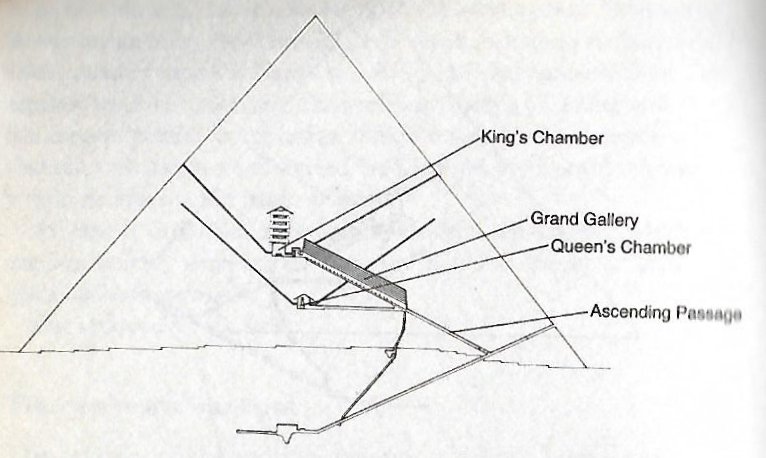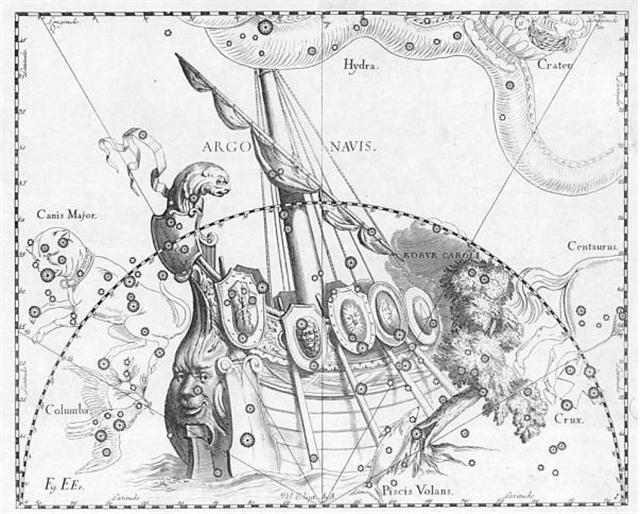392. Thuban had been the star at the North Pole when the great Egyptian pyramids where built.
... The star could be seen, both by day and night, from the bottom of the central passage of the Great Pyramid of Cheops (Knum Khufu) at Ghizeh, in 30° of north latitude, as also from the similar points in five other like structures; and the same fact is asserted by Sir John Herschel as to the two pyramids at Abousseir ...
But the precession had first pushed the pole to Kochab (β in Ursa Minor) and then to Polaris (α Ursae Minoris).
Counted from day 314 (→ π) there were 50 days remaining to the last day of the year (in day 364). The Julian day numbers were evidently 50 more than those at the time of the Bull. The precession since the Council of Nicaea had been 10 days and the Pope could therefore have considered 60 as the correct updated measure for the distance down to the time of the Bull. 31 (January) + 28 (February) + a leap day = 60. However, when at the time of the Pope the Sun had reached the right ascension line of Thuban in 5 October (278) - according to the Julian calendar - this ought to have corresponded to °Oct 11 (284 = 228 + 56), instead of 228 + 60 = 288 (°Oct 15). ... At the time of rongorongo Bharani was with the Sun in day 80 + *41 = 121 = May 1. The precession since the time of the Pope had corrected his mistake in not adjusting for the time prior to the Council of Nicaea: ... When the Pope Gregory XIII updated the Julian calendar he did not revise what had gone wrong before 325 AD (when the Council of Nicaea was held). Thus the stars were still 3-4 days 'out of tune' compared to the calendar ... the Gregorian 'canoe' was 'crooked'. His calendar was not in perfect alignment with the ancient star structure. Because he had avoided to adjust with the effects of the precession between the creation of the Julian calendar and the Council of Nicaea in 325 A.D. The Julian equinox was in the 3rd month of the year and in its 25th day (3-25) ... The correct position of Bharani should have been in May 1 (11 * 11 = 121) and the correct position of Thuban should have been in October 11 (284 = 84 + 200). In Roman times Thuban had been at day 265 ('September 22, autumn equinox) = 84 + 181 = ☼181 = 80 + 185 = *185, and Bharani would have risen with the Sun in day 121 (May 1) - 27 = 94 ('June 23). In the G text the glyphs early on side a of the tablet were arranged according to the time of the Bull and therefore it was not Bharani but Naos which marked the 'place of birth':
In other words, instead of counting days from January 1 in order to perceive the position of Bharani to be in day 121 (May 1) we should find Naos in *121 (July 20). The same structure as in the Gregorian calendar, but adjusted with 80 days in order to reach down to the time of the Bull. At the time of the Bull they waited for the return to visibility of stars which had been at the Sun. The minimum number of days before the reappearance was 16 and therefore the right ascension calendar days down from the time of rongorongo to the time of the Bull in a way was *64 (= 80 - 16). When Naos was at the Sun it should have been in 1 MAY (121 = 201 - 80) - according to the structure decided by Julius Caesar. Which could be expressed by putting the stern of Argo Navis at the back side of the coin and the face of Janus on its front side:
The creator of the G text seems to have thought that the golden age of the Bull motivated another and more elegant type of henua than that at the time of iron:
|
|||||||||||||||||||||||||||||||||||||||||||||||||||||||||||||||||||||||||||||||||||||||||||||||||||||||||||||||||||||||||||||||||||||||||||||||||||||||||||||||||||||||||||||||||||||||||||||||||||||||||||||||||||||||||||||










.jpg)

